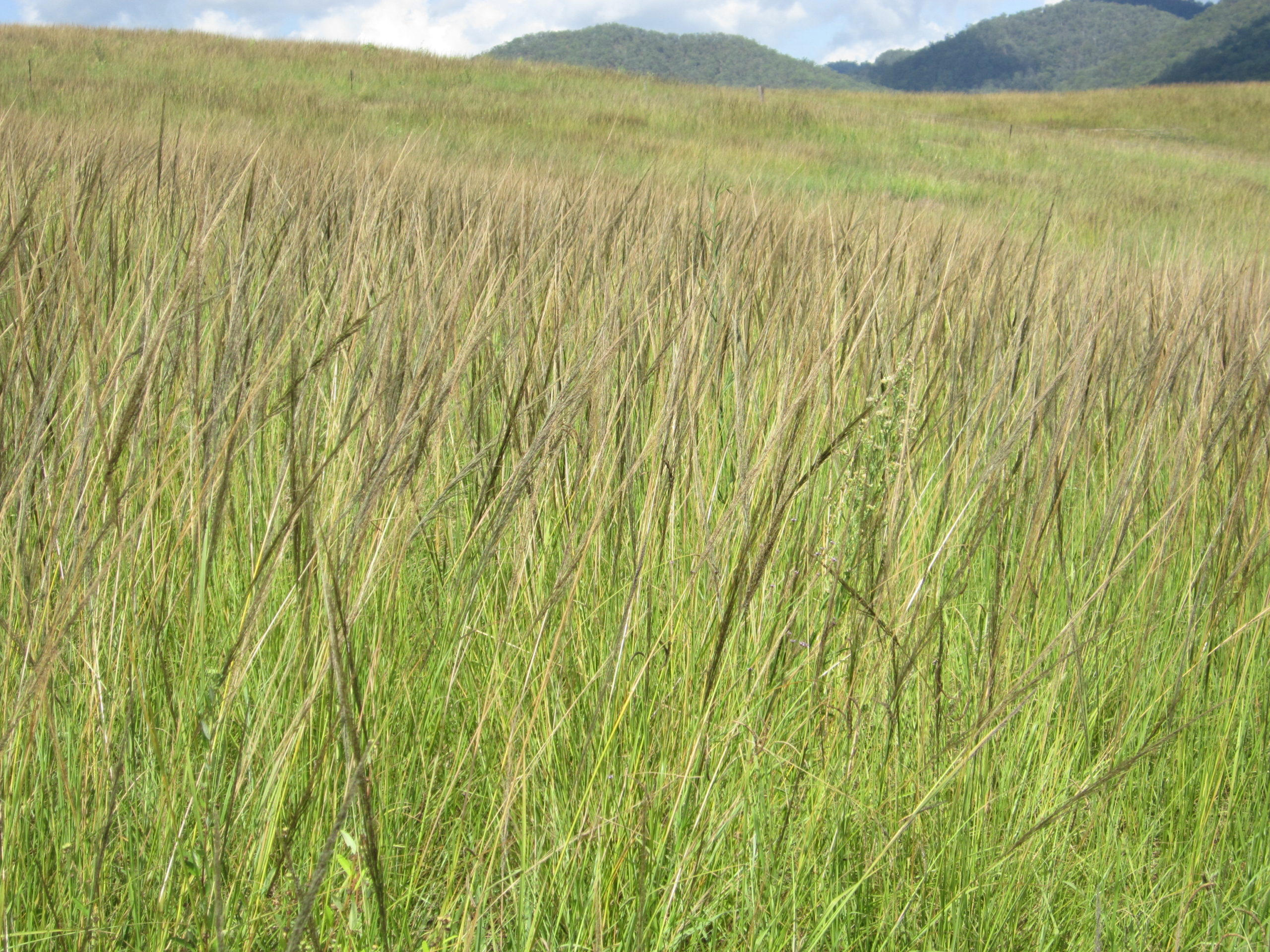Giant rat’s tail grass
The NSW Environmental Trust was one of the cash contributors to the national project ‘Underpinning agricultural productivity and biosecurity by weed biological control’ supported by the Australian Government programme Rural Research and Development for Profit (RRnD4P) (Round 4) administered by the Department of Agriculture, Water and the Environment. The three-year project (completed June 2022) was led by AgriFutures Australia, focusing on 11 different weed targets and includes researchers from four agencies with capabilities and infrastructure to undertake weed biocontrol research in Australia (CSIRO, NSW Department of Primary Industries, Queensland Department of Agriculture and Fisheries and Victoria Department of Economic Development, Jobs, Transport & Resources).
Giant rat’s tail grass (Sporobolus natalensis) was one of the weed targets in which the NSW Environmental Trust co-invested in. Joe Vitelli of Queensland Department of Agriculture and Fisheries was leading this sub-project.

Infestation of giant rat’s tail grass (Sporobolus natalensis) (Photo: J. Vitelli).
Infestation of giant rat’s tail grass (Sporobolus natalensis) (Photo: J. Vitelli).
Research undertaken as part of a previous project supported by RRnD4P (Round 2) identified several fungi associated with disease symptoms on giant rat’s tail grass in Australia. The current project is undertaking the necessary research to assess if any of these fungi could be exploited for biocontrol of this weed.
Activities:
- Prioritise and report on endemic pathogens found on Sporobolus species from RnDfP 15- 02-005.
- Conduct and report on field experiments of the impact of the giant rat’s tail (GRT) leaf smut (Ustilago sporoboli-indici).
- Develop and report on rearing methods for prioritised endemic pathogens on Sporobolus species.
- Conduct Koch’s postulate and pathogenicity testing on a minimum of 5 pathogen species.
- Report on progress to release at least one suitable native pathogen for biocontrol of GRT.


